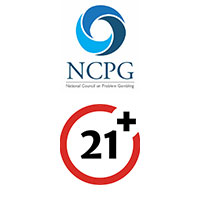Thanks to a relatively low house edge, blackjack can be the best game in a casino. Unfortunately, not all blackjack games are created equally.
Learning how to play perfect blackjack strategy is a helpful tool for maximizing a gambling bankroll. This goes hand in hand with playing the best available blackjack game.
Smaller casinos may have the same blackjack rules for all games. Depending on the location a large casino with more tables can have multiple blackjack games with different rules throughout the property.
This is the case at some of the most popular Las Vegas casinos. Many Vegas Strip casinos have blackjack games with different rules.
Specific sections of a casino like a party pit or high-limit room might have the same rules for all blackjack games. That same casino might be large enough that neighboring games in other parts of the casino have different rules.
Typically the worst gambling odds for any game are in high-demand locations like a party pit or sports viewing area. Conversely, higher minimum bets usually come with better rules. This is often the case with blackjack and other casino games.
This isn’t always the case but it’s s decent rule of thumb. We always want to play the best available blackjack games so it’s helpful to walk through a casino to see what the rules of the games are.
Here are some blackjack rules to look for and avoid if possible when visiting your favorite casino.
Avoid These Blackjack Rules
6:5 Payout
This payout for a natural blackjack impacts the house edge more than any other rule. It’s also the easiest blackjack rule to find as it’s always posted in a large easy-to-read font.
The traditional 3:2 payout for a natural blackjack is always the best option. The payout may seem small on a lower-limit bet but it adds up over time.
Simply put, a 3:2 game pays $15 for a $10 wager. The 6:5 version pays $12 for the same wager.
The $3 difference isn’t much per occurrence. However, this adds up over a session, a trip, and years of playing blackjack.
Number Of Decks
This isn’t exactly a rule but the number of decks in play during a blackjack game has an effect on the house edge. Blackjack games have a higher house edge when more decks are in play.
With all rules being the same, single-deck blackjack will have a lower house edge than a game with two, four, six, or eight decks of cards.
The difference can be as high as a 0.48% increase in house edge for a casino when comparing a single-deck game to one with eight decks.
This is why there are so many single and double-deck games that pay 6:5 for a natural blackjack instead of 3:2 at games with more cards in play.
Dealer Hits On Soft 17
Just about all blackjack games on the main casino floor have the rule where a dealer hits on soft 17. Pennsylvania is one of the few states that requires all of its casinos to stand on all 17s.
This blackjack rule adds about 0.22% to the house edge in favor of the casino. The hit-on-17 information is typically displayed on the felt of a blackjack table.
Players can usually find a game without this rule in a high-limit room.
No Surrender
Most, if not all, blackjack games on the main casino floor don’t allow a player to surrender. This rule adds 0.08% to the house edge.
Similar to hitting on soft 17, finding a blackjack game that allows a player to surrender may be found in a high-limit room.
Limited Double Down Options
Player-friendly blackjack rules allow players to double down whenever they want. That’s no longer the case at all blackjack tables.
Some blackjack games only allow players to double down on certain hands. Much like 6:5 blackjack, this rule is most often at high-demand locations like near a club or in a party pit.
There are some sections in a casino where blackjack games only allow players to double down when they are dealt a 9-11 or 10 and 11. There are plenty more hands when doubling down is the correct play according to basic strategy.
This rule adds between 0.9 and 0.18 to the house edge. I’ve only seen this rule at blackjack games that pay 6:5 for a natural.
Again, this isn’t much by itself but it all adds up.
